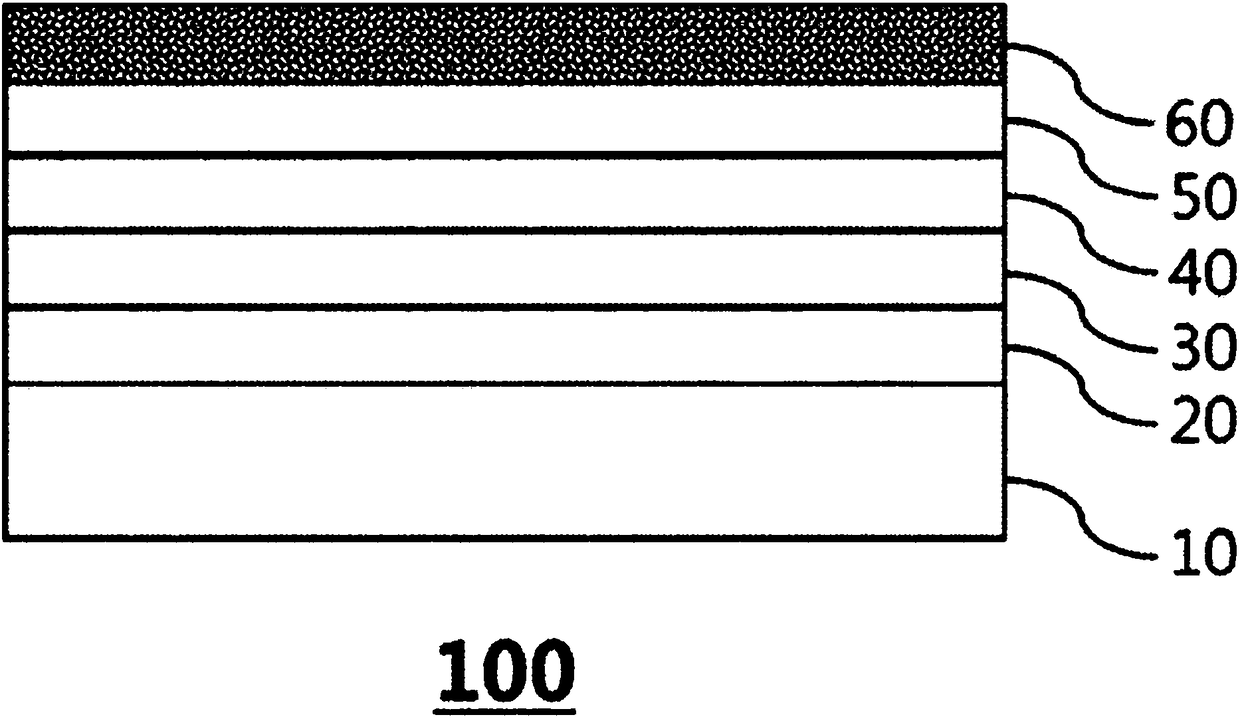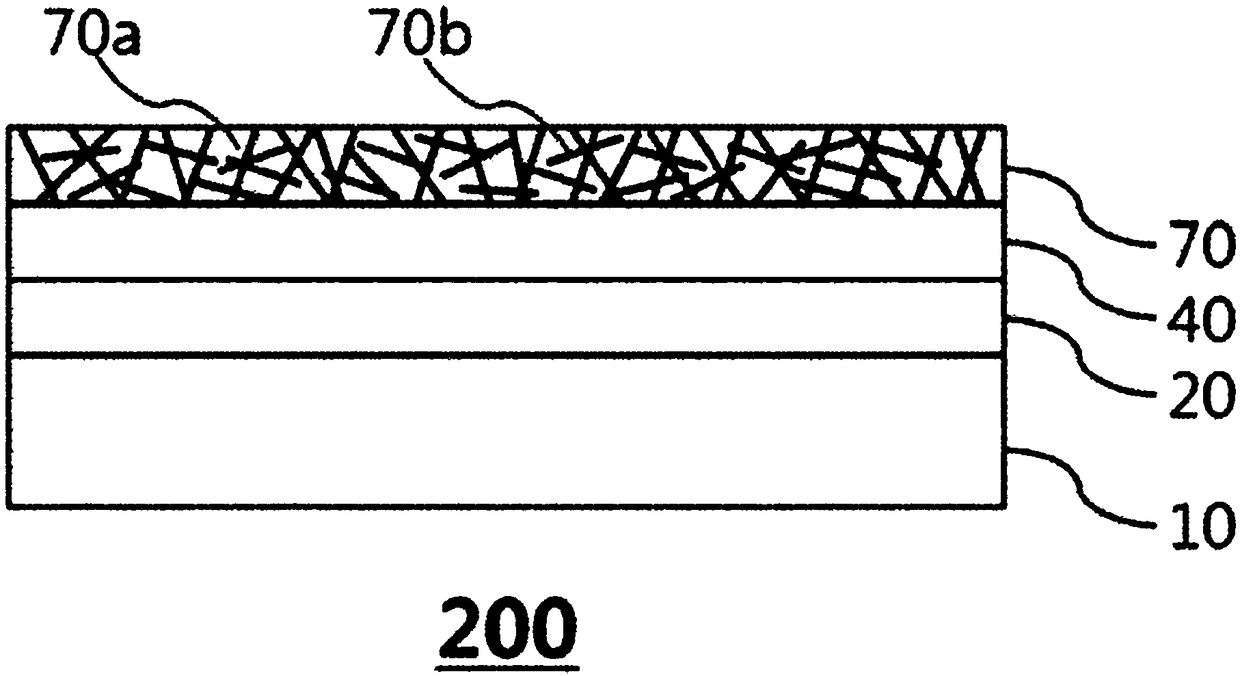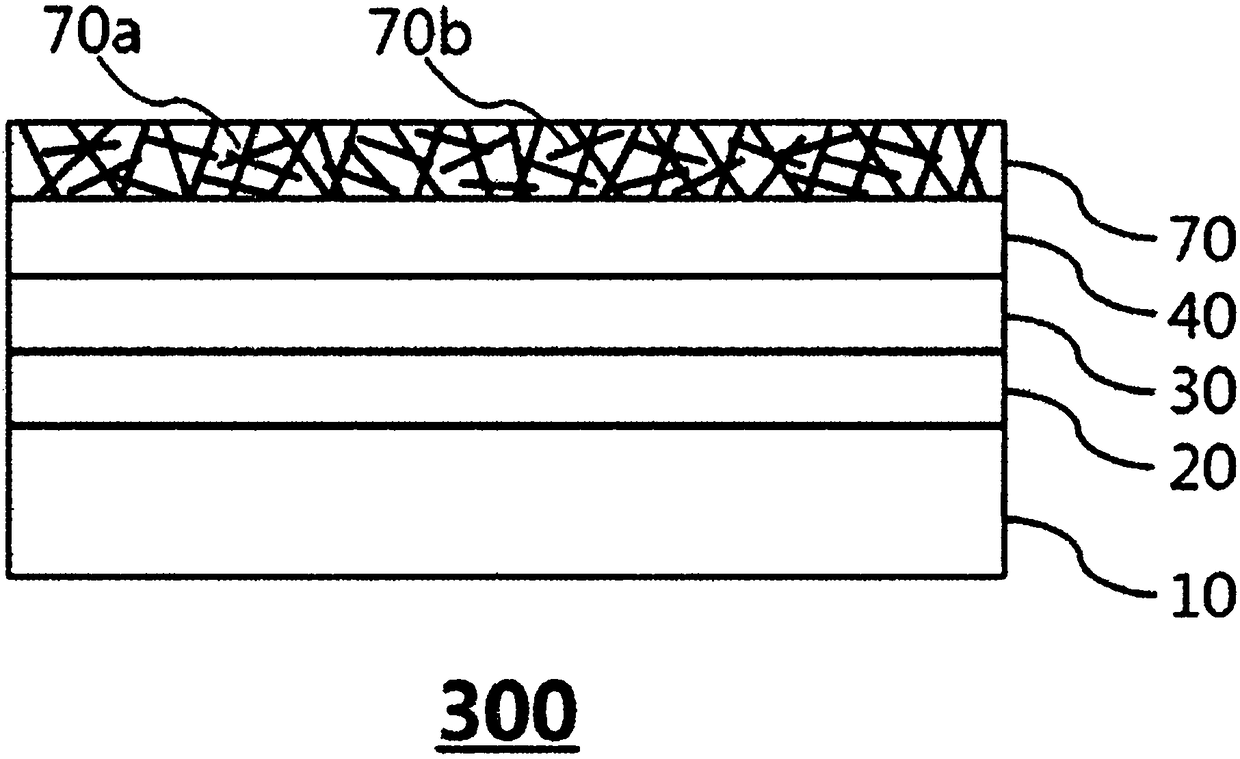Organic solar cell and method for manufacturing same
A technology of solar cells and manufacturing methods, applied in the direction of final product manufacturing, organic semiconductor devices, sustainable manufacturing/processing, etc., can solve problems such as insufficient effect, high cost, and long time, so as to improve production volume and production efficiency, Effect of preventing deterioration of life characteristics and improving light transmittance
- Summary
- Abstract
- Description
- Claims
- Application Information
AI Technical Summary
Problems solved by technology
Method used
Image
Examples
Embodiment 1 and comparative example 1
[0122] Example 1 and Comparative Example 1: Manufacture of Organic Solar Cells
Embodiment 1
[0124] While transferring the substrate film on which the ITO layer was formed in a roll-to-roll manner, a ZnO-containing coating solution (mixed with 247 mg of Zn(OAC) 2 2H 2 O, 126mg of KOH and 1mL of 1-butanol (1-butanol) were slit-coated on the ITO layer in the form of stripes, and dried at 120°C to form a ZnO metal oxide thin film layer. In the slit coating, the line speed was 12 mm / sec, the slit die height was 1300 μm, and the flow rate of the coating liquid was 0.4 mL / min.
[0125] Subsequently, on the ZnO metal oxide thin film layer, the photosensitive layer forming coating solution (made of 15 mg SP001 (manufactured by Merck), 12 mg A-600 (manufactured by Merck Corporation) was mixed with 1 mL of 1,2-dichlorobenzene (1,2-dichlorobenzene), and dried at 120° C. to form a photosensitive layer. In the slit coating, the line speed was 12 mm / sec, the height of the slit die was 1500 μm, and the flow rate of the coating liquid was 1.2 mL / min.
[0126] Carry out slit coa...
Embodiment 2
[0128] Using the coating solution for forming a photosensitive layer of Example 1, spin coating at a speed of 1000 rpm, heat treatment at 70° C. for 2 minutes, and form a photosensitive layer with a thickness of 171 nm. The same method made organic solar cells.
PUM
| Property | Measurement | Unit |
|---|---|---|
| thickness | aaaaa | aaaaa |
| particle size | aaaaa | aaaaa |
| thickness | aaaaa | aaaaa |
Abstract
Description
Claims
Application Information
 Login to View More
Login to View More - R&D
- Intellectual Property
- Life Sciences
- Materials
- Tech Scout
- Unparalleled Data Quality
- Higher Quality Content
- 60% Fewer Hallucinations
Browse by: Latest US Patents, China's latest patents, Technical Efficacy Thesaurus, Application Domain, Technology Topic, Popular Technical Reports.
© 2025 PatSnap. All rights reserved.Legal|Privacy policy|Modern Slavery Act Transparency Statement|Sitemap|About US| Contact US: help@patsnap.com



